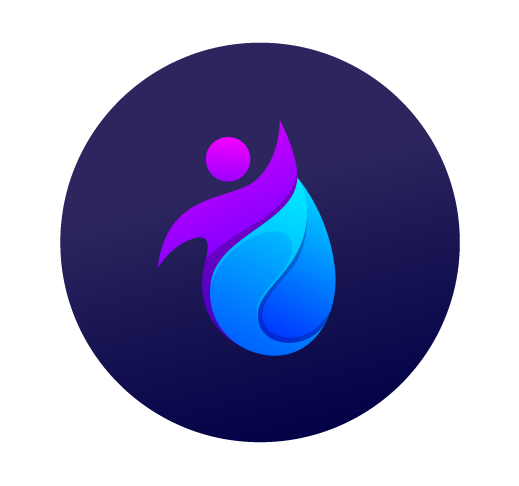Imagine waking up on a Wednesday, opening your laptop, and knowing you’re working in a role that fits you—without commuting. That’s the power of matching remote jobs to your skills.
More workers want flexibility, but finding remote jobs that truly align with personal strengths isn’t automatic. It requires intention, a plan, and actions that many overlook in their search.
Let’s unravel practical steps and tested techniques so you can land a remote job suited to your individual skills. Read on for concrete ways to boost your results.
Pinpointing Your Strengths Creates Clearer Remote Paths
By accurately assessing your abilities, you’ll approach remote jobs with purpose, targeting roles that genuinely fit your skillset and growth goals.
Many start by jotting down broad roles, but listing what you enjoy and excel at makes better matches for remote jobs. Review past successes for clues.
Turning Experience Into a Skill Inventory
Think about last week: Which tasks energized you? Write those alongside the skills used. For example, leading meetings taps communication and organization—two assets for remote jobs.
Highlight team praises. If colleagues say, “Your feedback solves problems fast,” note that as conflict resolution or coaching. Map these skills to categories like leadership or analysis.
Sort experiences: customer service chats, managing online projects, or data entry. These build a targeted profile. Stick to skills you’d want in your next remote role.
Using External Validation for Extra Clarity
Ask contacts, “What do I do better than most?” Collect three replies and scan for consistencies. This external lens helps filter what employers might value from you in remote jobs.
Check performance evaluations or LinkedIn endorsements. If you see “attention to detail” highlighted multiple times, document it. These are skills to emphasize in remote job applications.
Notice recurring themes across sources. Convert these into a core list—communication, problem-solving, adaptability—tailored for remote roles, where self-management and clarity matter greatly.
| Assessment Tool | What It Reveals | How To Use It | Takeaway |
|---|---|---|---|
| Past Performance Reviews | Core strengths, growth points | Highlight strong repeated feedback | Features top skills for job search |
| Peer Feedback | Outside perspective on talents | Request via email or calls | Uncovers strengths you may miss |
| Online Skill Assessments | Technical and soft skills | Take tests relevant for remote work | Proves readiness to employers |
| Personal Reflection Journals | Which tasks energize you | Note each day’s most satisfying work | Aligns job search with true interests |
| Endorsements (LinkedIn) | Validated strengths by network | Sort top endorsements by frequency | Feature in application materials |
Customizing Your Job Search Tools for Skill Focus
The right settings signal employers you’re the best match for remote jobs. Tailor these to highlight your real strengths.
Send a clear message by updating profiles, resumes, and job alerts so they mirror the language and requirements of your ideal remote roles.
Optimizing Your Resume and Portfolio
Use action verbs describing what you achieved, not just what you did. For instance, “Streamlined billing for remote clients, cutting delays by half.”
Display projects in digital portfolios that mirror the actual workflow, communication tools, and productivity metrics crucial for remote jobs.
- List key results first so recruiters see impact fast. For example, “Launched virtual training, decreasing team onboarding time by 30%.” Visual metrics catch the eye.
- Include technology keywords relevant to remote jobs, such as “Zoom,” “Slack,” “Trello,” or “Google Workspace.” These help applicant tracking systems surface your resume.
- Categorize achievements by remote suitability: “Self-managed deliverables,” “Cross-time zone collaboration,” or “Remote client support.” List these under a “Remote Capabilities” section.
- Highlight remote certifications or courses. Mention platforms used, like Coursera or Udemy, and include their completion dates to demonstrate fresh skills.
- Showcase testimonials or references focused on remote teamwork, communication, and adaptability. Paste a one-line endorsement under relevant accomplishments.
By customizing each section, your application speaks directly to the requirements remote employers care about, tightening the match between your skills and open roles.
Enhancing LinkedIn for Remote Opportunities
Update your headline with a specific target, like “Remote Digital Marketer specializing in Email Automation,” so remote jobs appear in searches that matter.
Add location as “Remote” if the platform requests one. For the About section, share a mini-story: “Helping virtual teams engage users using data-driven outreach—100% remote since 2021.”
- Switch OpenToWork privacy settings to “remote jobs only” to avoid relocation requests. Recruiters see you’re focused and available.
- Comment on remote work groups and posts to gain visibility, but add insights about tools or successful at-home routines. Example: “Noticed Slack standups keep communication clear in remote jobs.”
- Request remote job recommendations from contacts with a clear ask: “Looking to join a customer support team using Zendesk and Intercom in a full-remote setup.” Specificity draws relevant leads.
- Follow remote-first companies’ pages and like recent posts to become visible to their HR teams. Consistent engagement bumps you up in algorithmic searches.
- Complete LinkedIn assessments on trending tools, then display “Verified Skill” badges. These attract employer attention and back up claims on your public profile.
Keeping your digital presence updated ensures you’re discoverable and compelling for remote recruiters searching for your precise skillset.
Evaluating Remote Job Descriptions With a Skill Lens
You’ll gain an edge by reviewing job ads for concrete clues that confirm if your skills and employer needs align for remote jobs.
Take job listings apart line by line, mapping their requirements to your personal strengths and experiences before you spend time applying.
Dissecting Core Requirements Versus Nice-to-Haves
Read through the entire requirements section, underlining hard and soft skills mentioned for remote jobs, like “independent time management” or “asynchronous communication experience.”
Search for patterns. If multiple jobs mention “CRM proficiency” or “self-driven” in the first half, those are core. Add any you’re missing to your upskilling plan.
Don’t get discouraged by long “preferred” lists. Prioritize jobs where 80 percent of requirements fit you. That’s where the remote job match multiplies.
Spotlighting Language That Signals Cultural Fit
Watch for phrases like “global team collaboration” or “results-driven.” These flag a company’s remote culture. Mirror their language in your application’s summary section or when networking.
Take note of recurring remote tools. Do they emphasize “Slack” over “Teams,” or “Cloud-based project trackers”? List your comfort level with those in your skills section.
If the job mentions flexible hours or async work, describe when you’ve handled self-paced projects well. Employers love proven adaptability in remote jobs.
Expanding Your Search With Niche Remote Job Boards and Communities
Moving beyond big-name job boards gives you access to exclusive remote jobs and lets you target companies known for valuing remote talent.
Several online spaces curate listings for specific roles or industries, increasing your chance of matching your unique skills to the right remote openings.
Exploring Role-Specific Boards
If you’re a web developer, look for tech-focused remote job platforms that feature “Frontend Remote” or “Full-Stack Flexible.” They vet postings so you avoid scams.
Writers find success in niche boards highlighting “editorial” or “content manager—remote.” Filtering by function, not just “remote,” turns up jobs that fit your portfolio.
Designers search “Remote UX” boards that gather user-experience focused jobs outside the general listings. Extra filters let you sort by time zone compatibility or software requirements.
Joining Remote-Specific Career Communities
Sign up for Slack channels, Discord groups, or professional forums focused on remote jobs, such as “Remote Marketing Network.” New openings circulate here before public posting.
Contribute tips or insights to these groups so other members recognize your expertise, expanding your visibility organically to hiring managers.
Set daily alerts and join virtual events or AMAs (Ask Me Anything) where recruiters explain remote roles and answer real-time questions—great for growing your network and insight.
Refining Keywords and Filters for Precise Job Matches
Dialing in the right search terms returns high-quality remote jobs tailored to your strengths instead of irrelevant roles that waste your time.
Update saved searches every week with synonyms and technical terms that reflect your growing skillset and target market trends in remote jobs.
Building a Winning Boolean Search
Add quotation marks around job titles, like “Remote Customer Success Manager,” to limit results to exact matches, saving hours scrolling unrelated listings.
Include “AND,” “OR,” and “NOT” for combinations: for instance, “Remote Graphic Designer AND Adobe” removes jobs with unrelated tools or duties, keeping your list relevant.
Expand results using alternative wording or emerging remote job titles, such as “Distributed Product Owner” or “Telecommute Support Lead”—trends change, so update monthly.
Understanding Platform-Specific Filters
Toggle “Remote only” or “Work from anywhere” on each job search platform. Don’t forget adding custom skills and preferred salary ranges to narrow choices even more.
Save multiple filter sets if you seek remote jobs in several categories: “part-time remote,” “contract remote,” or “entry-level remote.” Run each saved set weekly.
Read help articles from job boards about advanced filters; tiny differences between platforms can amplify your ability to unearth rare remote matches.
- Keep a log of which keyword and filter combos yield interviews. This helps you refine and quickly repeat success in your remote job search.
- Share your best phrase lists in remote forums to help others and gain recommendations in return—a two-way benefit that grows your visibility.
- Update search terms monthly based on skills in most recent remote job descriptions, making your search adapt as employer expectations shift.
- Create alerts that combine “remote” with your niche, such as “Remote Data Analyst”—this attracts relevant recruiters and jobs directly to your inbox.
- Tweak your profile visibility and tags on platforms like LinkedIn, using emerging remote work terminology to ride the newest hiring trends.
Strengthening Your Candidacy With Remote-Specific Examples
Having the right skills matters, but remote jobs demand evidence you’ve applied them in distributed work—so prep examples recruiters can believe.
Use STAR stories—a Situation, Task, Action, Result—to keep your responses tight, focused, and relevant when you interview or write cover letters.
Crafting Compelling Application Materials
Start cover letters by summarizing the remote job title and the top skills you apply in that context, such as “I thrive leading global teams on Slack and Notion.”
Give a one-sentence result: “I resolved a time zone handoff breakdown by setting clear 24-hour check-in points, increasing project completion rate by 15% in six months.”
Close with a call to connect, asking, “When could we speak about how my experience aligns with your remote-first approach?” Direct language yields more responses.
Turning Interviews Into Proof Points
Share anecdotes that demonstrate you handle remote challenges: “When the team’s video failed mid-presentation, I led by phone, pivoting fast and still hitting our sales demo numbers.”
Show you use remote tools habitually. Try: “I log daily standups in Trello, tag blockers for quick resolution, and follow up asynchronously to keep our momentum.”
Watch body language. In video interviews, maintain eye contact by looking at the camera. Confirm you understand video, chat, and document collaboration etiquette—crucial for remote roles.
Taking the Next Step: Routine, Iteration, and Growth
A repeatable approach makes finding remote jobs that fit your skills a habit, not a one-off event—so building in structure multiplies your odds.
Just like maintaining a garden, returning to your search at set intervals and nurturing your skills ensures a consistent pipeline of relevant remote jobs.
Schedule weekly “search sprints”—30-minute blocks where you apply new filters, update your resume, and network with remote-minded peers or recruiters.
Refresh your skills each month with a course, webinar, or group challenge. Post your certificate or what you learned on LinkedIn to remind your network you’re growing.
Review each rejection or lead for patterns. Did a higher response rate come from a specific resume version? Did certain skills discussed get more interviews? Double down there.



